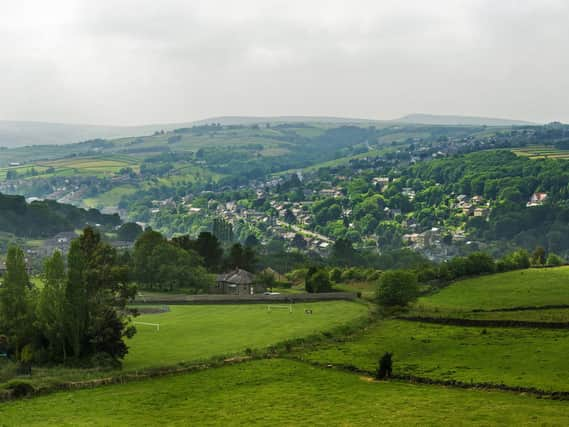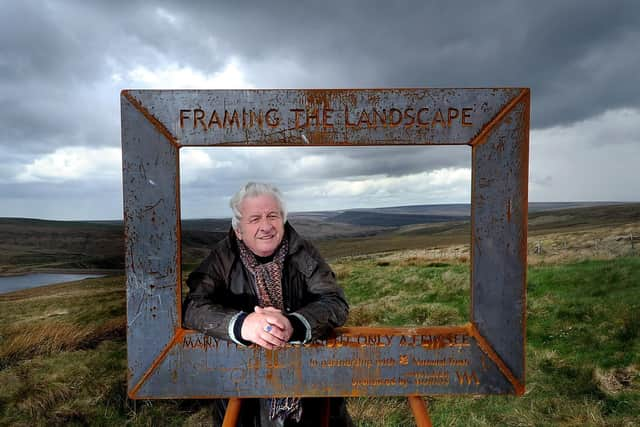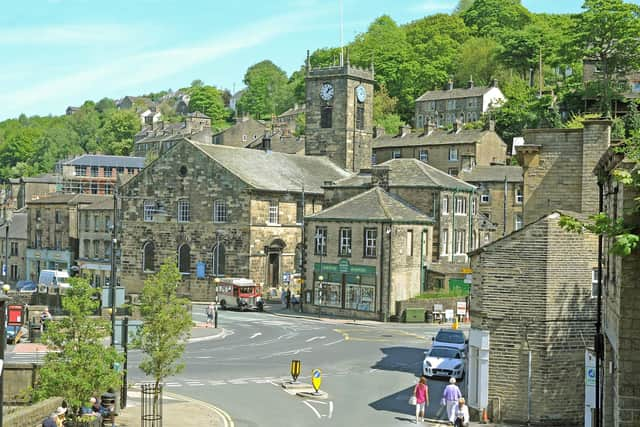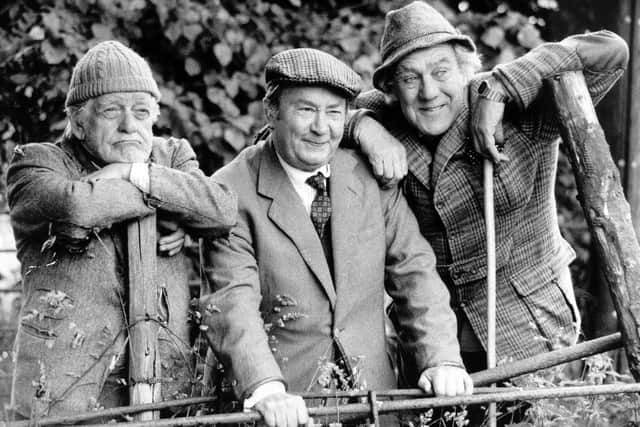From mills and textiles to artists and film makers, Holmfirth is a town unafraid of reinvention


It all began in the late 19th century when James Bamforth, a local painter and decorator turned photographer and artist, began producing lantern slides.
Bamforth became known as the ‘king of the lantern slides’, and went on to produce films - his company was the first in Britain to make films purely for entertainment purposes. (He also founded a famous saucy postcard company).
Advertisement
Hide AdAdvertisement
Hide AdAs there weren’t any professional film actors at the time, the ever-inventive Bamforth used local people for his movies and stories about the Holme Valley for his films. His filming brought the streets of Holmfirth to a virtual standstill, with locals often seen in the streets getting plastered with custard pies, or being drenched by fire hoses.


Bamforth and Company created numerous films that gained an international following and their production continued in the town until the start of the First World War by which time Bamforth himself had died.
He was described in one local newspaper as ‘one of Holmfirth’s most honoured townsmen’ and while the paths of Hollywood and Holmfirth diverged, the town hasn’t lost its connection with its cinematic past.
The Bamforth and Company building, where the film business began, still stands in the centre of Holmfirth and this legacy continues in the shape of film-makers, cinematographers and make-up artists who have made the Holme Valley their home.
Advertisement
Hide AdAdvertisement
Hide AdIt’s not without reason that Holmfirth was referred to as ‘Yorkshire’s Left Bank’.


For many people, the town is best known as the location for the BBC’s longest-running sitcom, Last of The Summer Wine, a show whose characters were drawn from the mill communities of the Pennines past, rather than the creative habitués of today. It’s now more than a decade since the series ended but it still attracts visitors who beat a path to Sid’s Cafe and fondly remember the antics of Compo, Clegg and Foggy and co.
Artists have long been drawn here, too, enticed by its proximity to the Peak District National Park and the brooding wildness of the Pennine moors. Chief among them is the acclaimed watercolourist Ashley Jackson who has lived here with his family for more than 40 years and whose popular gallery is a local landmark that has become, like the artist himself, synonymous with the town.
Then there’s its rich musical heritage. The Holmfirth Sing was a tradition that lasted for more than a century before being revived as part of the town’s arts festival in 2018. In the 19th century, singing was a way of bringing communities together and in 1873 the Longwood Sing was born when Jabez Iredale, then secretary of the Longwood Working Men’s Club, met with a group of friends to sing outside.
Advertisement
Hide AdAdvertisement
Hide AdThey enjoyed it so much they decided to repeat this the following year, meeting early one Sunday morning so that it didn’t interfere with their work, or church attendance.


Word soon spread and other so-called ‘Sings’ sprang up across the Holme Valley, including the Holmfirth Sing which was first held in 1882. At the height of their popularity a couple of hundred singers would take part, accompanied by dozens of orchestral musicians belting out traditional hymns and choruses that echoed across the valley.
By the latter part of the last century most of these events fizzled out with the final Holmfirth Sing held in 1990. That is until it was revived as part of the Holmfirth Arts Festival three years ago.
Hearing all this you could perhaps be forgiven for thinking that Holmfirth’s story is all about art and culture. It isn’t. Back in Saxon and medieval times, the lords of Wakefield used the area as a hunting forest, the name Holmfirth means ‘sparse woodland belonging to Holme’. It wasn’t mentioned in the Domesday Book but by the 13th century there are records of a corn mill and bridge and a small village.
Advertisement
Hide AdAdvertisement
Hide AdHolmfirth grew slowly, populated by farm labourers and others working in cottage industries, where spinning and weaving was carried out.
By the late 18th century the Industrial Revolution had reached Holmfirth valley and it was transformed, like so many enclaves in West Yorkshire, into a thriving mill town with the textile industry at its beating heart.
Holmfirth sits in the centre of a triangle bounded roughly by Leeds, Sheffield and the Peak District, and over the centuries its geography has been both a kiss and a curse.
The supply of fast flowing water from the Holme and Ribble rivers was crucial to the nearby mills and factories, but it also brought with it the risk of flooding. And so it proved in 1738 and again in 1777. The Leeds Intelligencer reported on the latter, saying: “The torrent of water was so great, and the storm of thunder and lightning which preceded it, so violent, that many people began to terrify themselves with the thoughts of another universal deluge…”
Advertisement
Hide AdAdvertisement
Hide AdThree men drowned, one of whom left a widow and nine children. Worse was to follow in February 1852 when the embankment of the Bilberry Reservoir collapsed, causing the deaths of 81 people living in the Holme Valley. The dam was breached in the early hours of the morning after heavy rain, meaning many of the victims were asleep when the torrent of water gushed towards their homes.
More than 86 million gallons of water were released into the River Holme, and many properties in the valley were destroyed. Four mills, 10 dye houses and warehouses, 27 cottages, seven shops, seven bridges, and eight barns all suffered severe damage. The story made headlines around the country and hordes of people, some from as far away as London and Edinburgh, headed to the Holme Valley to see the scale of the devastation with their own eyes.
Holmfirth’s reputation as a busy wool town continued up until the 1940s. Today, it faces challenges like any other rural town, as the nation’s already beleaguered high streets prepare to recalibrate in the post-pandemic world.
It has, though, carved out a niche as something of a festival town with a wide calendar of events throughout the year, including Holmfirth Arts Festival, the Holmfirth Festival of Folk and a food and drink festival.
Advertisement
Hide AdAdvertisement
Hide AdFurther obstacles lie ahead, of course, but there is something about this robust little town that gives cause for optimism. Its solid, soot-caked stone buildings hark back to a sepia-tinged past, yet there is a quirkiness and inventiveness about the place.
Perhaps there is an air of self-confidence too, and an understanding that Holmfirth doesn’t need to see its name up in lights to know its true worth.